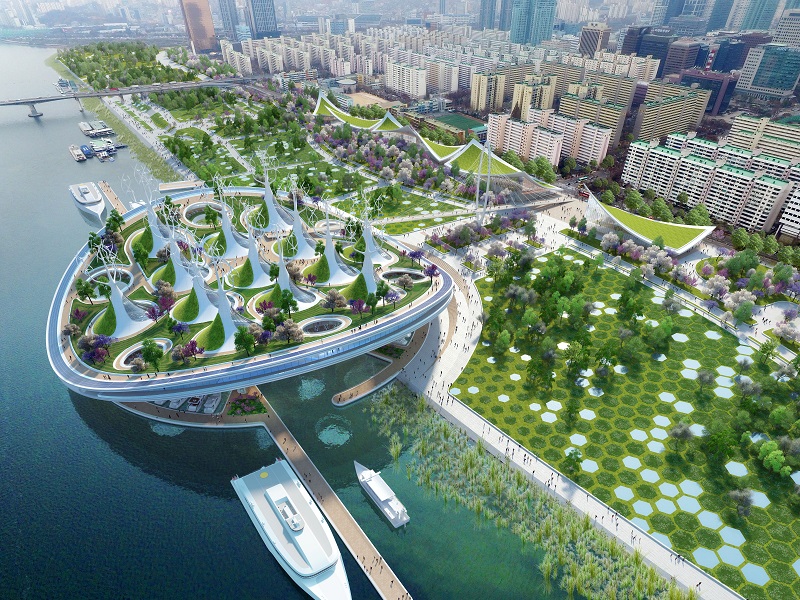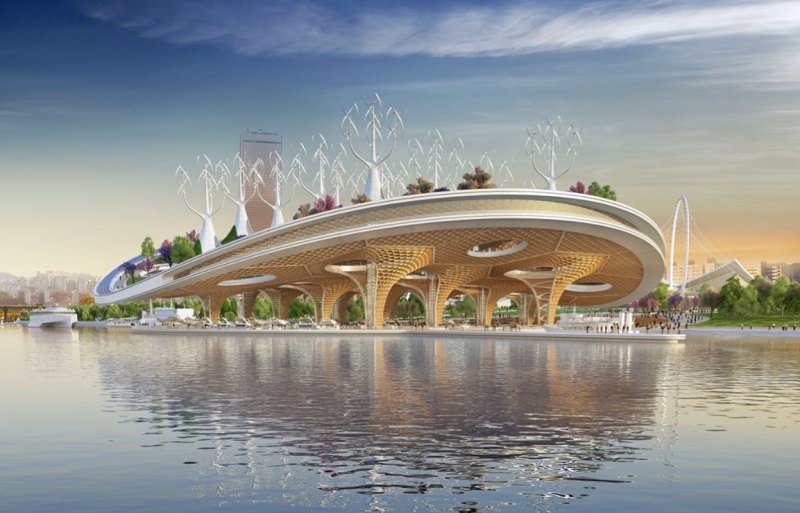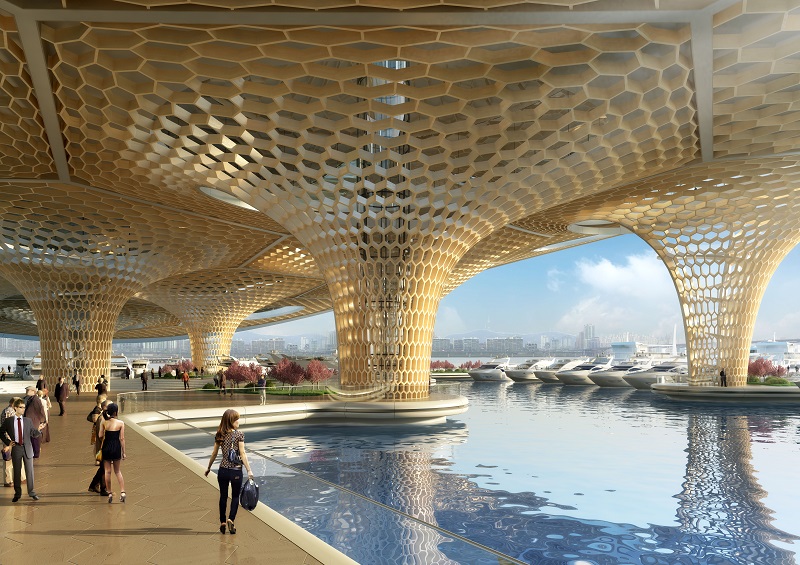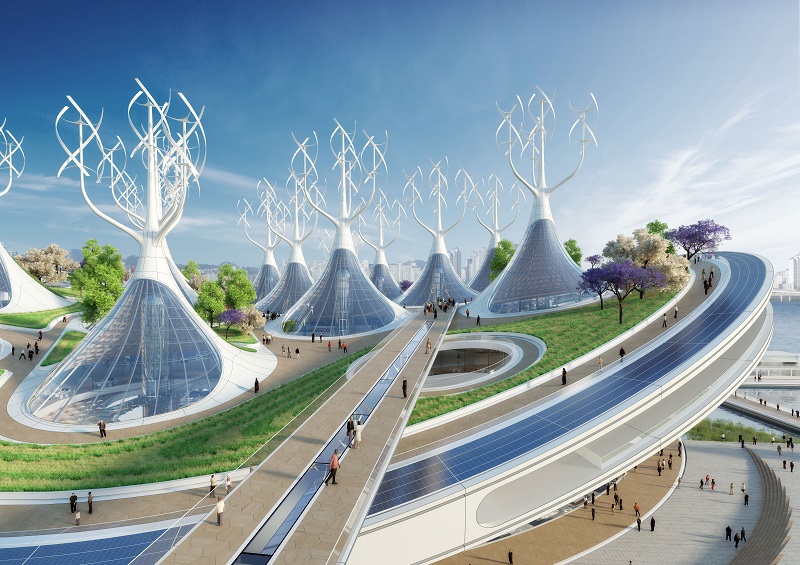Manta Ray, Seoul
In June 2017, Vincent Callebaut Architectures released designs for an innovative new urban landscape project in Seoul, South Korea.
Yeouido Park is an experimental urban space dedicated to sustainable development, and is one of Seoul’s most popular tourist attractions. Under the auspices of the South Korean government, the park is intended to promote the rehabilitation of urban ecosystems and biodiversity.
As a major part of this, the Manta Ray project intends to transform the park into an ecological forest of willow trees and create a marsh-like filtering strip of vegetation; enhancing the site’s natural irrigation and protecting the banks against flooding.
The proposed plan is made up of four biomimetic projects. The most striking of these is Yeoui-Naru, which involves the construction of a floating ferry terminal on the Han River. Its design is inspired by the hyperbolic geometry of a manta ray, and will be capable of adapting to rising waters of up to 5 m (16.4 ft).
The structure will consist of radial and concentric floating piers from which tree-like structures made from cross-laminated timber will rise, woven in a honeycomb pattern and branching out at the top.
The other three projects include:
- The landscaping of the river bank.
- The development of the park’s upper ground.
- The development of a cultural complex.
In addition, the project intends to serve as an example of energy efficient construction and sustainable building techniques.
The floating terminal will produce all of its own energy requirements:
- Solar: The rooftop will include 49,000 sq. ft of laminated glass facade with encased photovoltaic polycristalline cells.
- Wind: Rooftop wind trees will make up a 52-VAWT (vertical axis wind turbine) farm.
- Biomass: Organic and biodegradable waste from the park will supply a biomethanation plant.
- Water: Oscillating-foils hydrokinetic turbines will be integrated and synchronised along a floating barrier’s hull that encircles the marina. These are biomimetically-inspired from the tails of whales or dolphins and turn the river’s kinetic energy into electricity.
Images and content © Vincent Callebaut Architectures.
[edit] Related articles on Designing Buildings Wiki
Featured articles and news
Latest Build UK Building Safety Regime explainer published
Key elements in one short, now updated document.
UKGBC launch the UK Climate Resilience Roadmap
First guidance of its kind on direct climate impacts for the built environment and how it can adapt.
CLC Health, Safety and Wellbeing Strategy 2025
Launched by the Minister for Industry to look at fatalities on site, improving mental health and other issues.
One of the most impressive Victorian architects. Book review.
Common Assessment Standard now with building safety
New CAS update now includes mandatory building safety questions.
RTPI leader to become new CIOB Chief Executive Officer
Dr Victoria Hills MRTPI, FICE to take over after Caroline Gumble’s departure.
Social and affordable housing, a long term plan for delivery
The “Delivering a Decade of Renewal for Social and Affordable Housing” strategy sets out future path.
A change to adoptive architecture
Effects of global weather warming on architectural detailing, material choice and human interaction.
The proposed publicly owned and backed subsidiary of Homes England, to facilitate new homes.
How big is the problem and what can we do to mitigate the effects?
Overheating guidance and tools for building designers
A number of cool guides to help with the heat.
The UK's Modern Industrial Strategy: A 10 year plan
Previous consultation criticism, current key elements and general support with some persisting reservations.
Building Safety Regulator reforms
New roles, new staff and a new fast track service pave the way for a single construction regulator.
Architectural Technologist CPDs and Communications
CIAT CPD… and how you can do it!
Cooling centres and cool spaces
Managing extreme heat in cities by directing the public to places for heat stress relief and water sources.
Winter gardens: A brief history and warm variations
Extending the season with glass in different forms and terms.
Restoring Great Yarmouth's Winter Gardens
Transforming one of the least sustainable constructions imaginable.


























